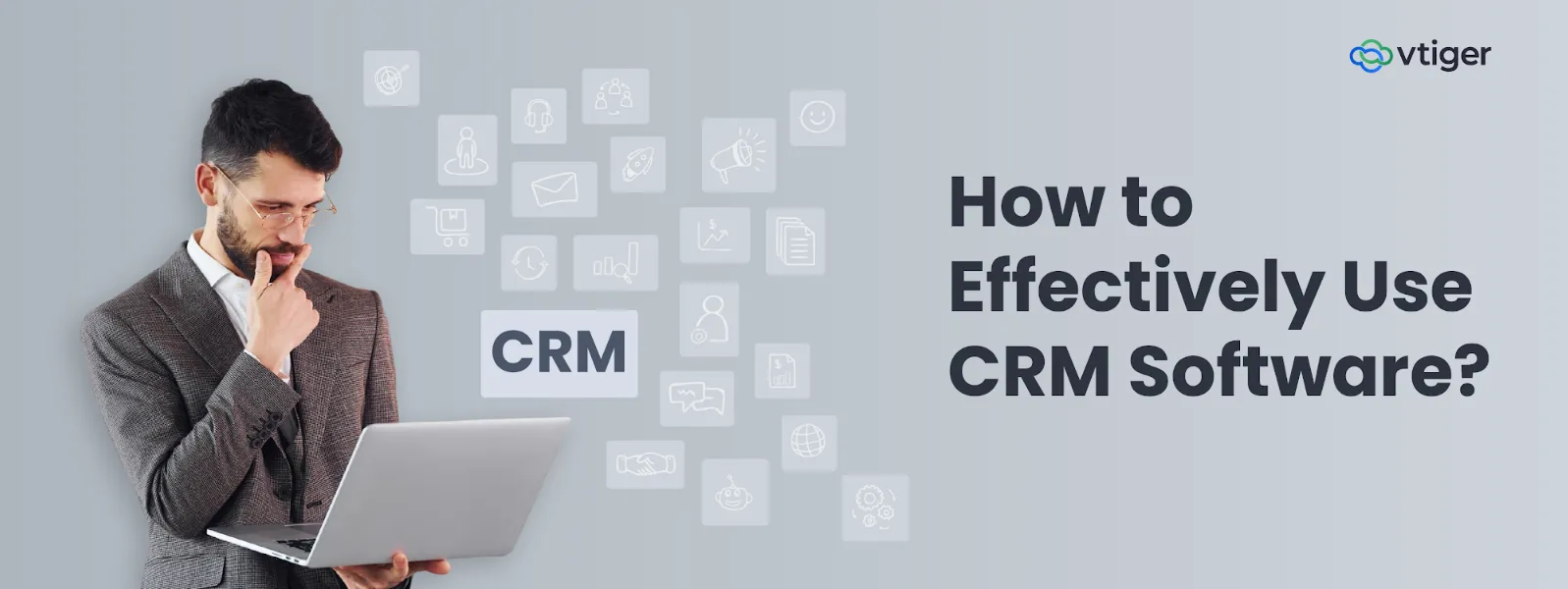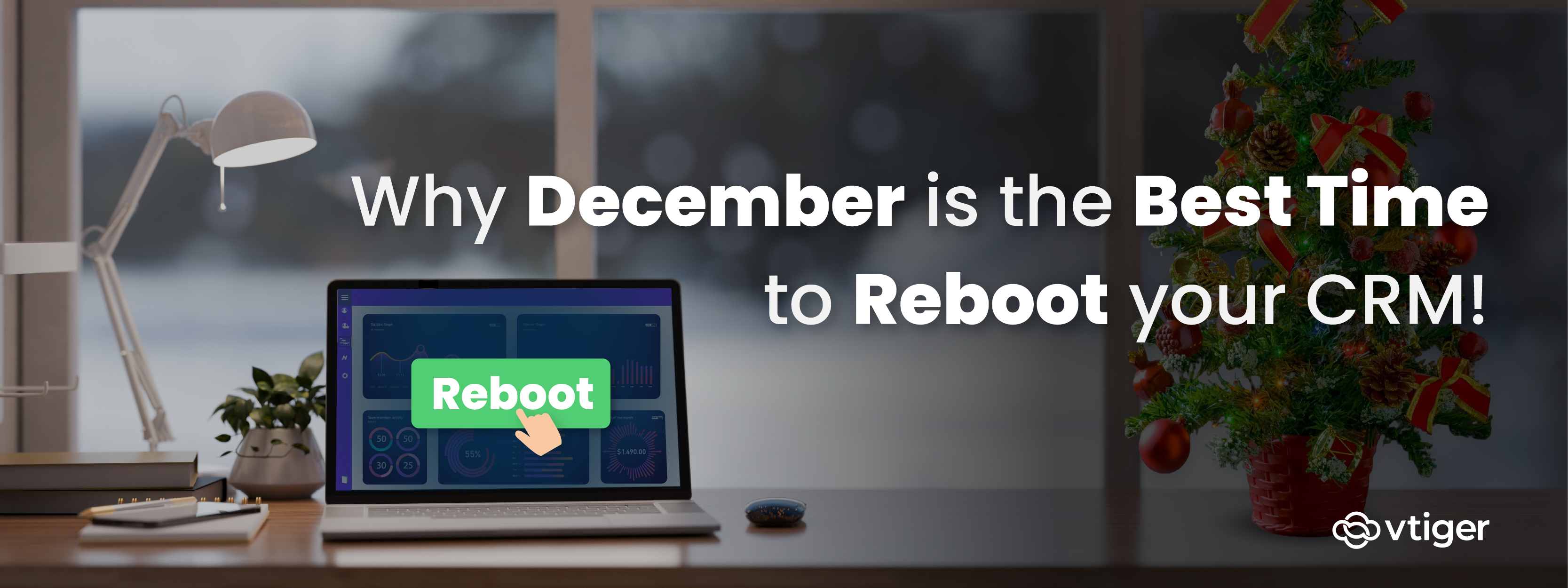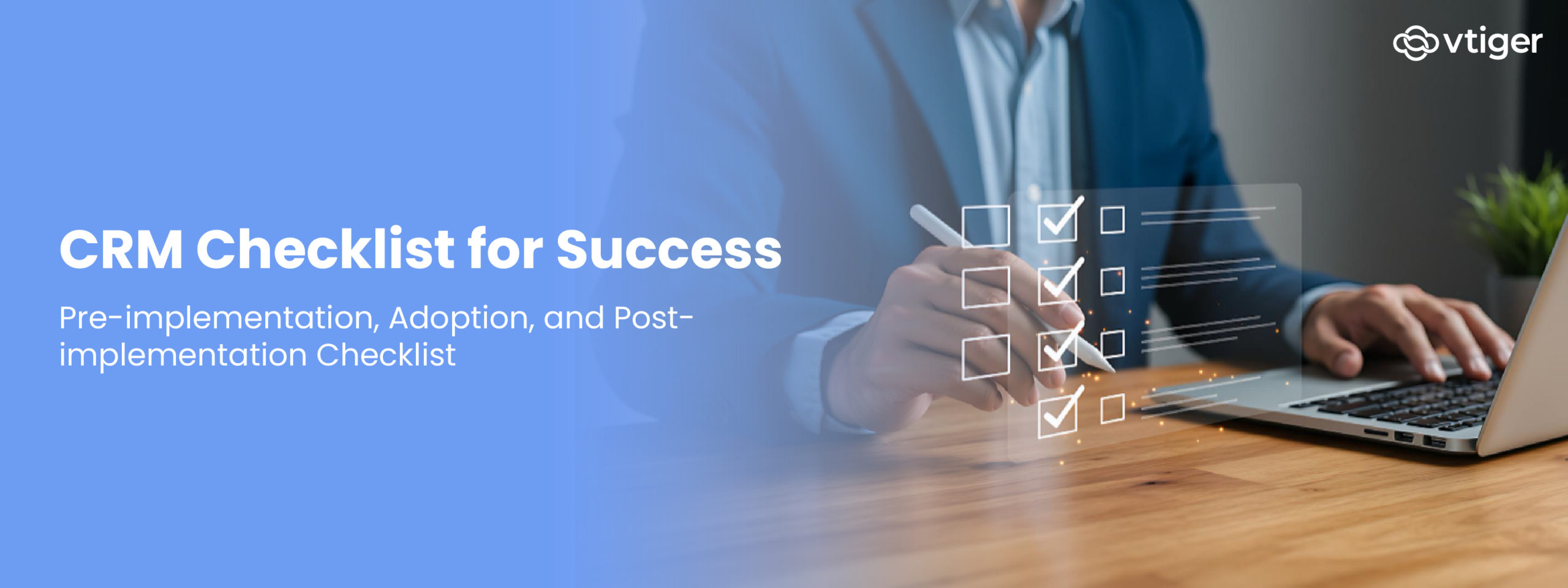What Is CRM Software?
Customer interactions in most businesses happen across multiple channels like calls, emails, social media and other messaging platforms (depending on the country). Without a system in place, all the integral customer data and the conversations made with them remain scattered and difficult to track. A Customer Relationship Management (CRM) software brings all this information into one place, making it easier to manage relationships and improve sales processes.
With the current digital economy and the growing e-commerce industry, CRM software adoption has become a necessity for businesses of all sizes. Companies need to keep record of every customer detail such as contact numbers, email addresses, communication history, preferences, and purchase records to ideate plans in order to approach them with better service, improved branding campaigns, and an easy onboarding process for the interested ones.
Read this blog to understand how businesses can use CRM, starting from its setup, team adoption and how to use its advanced features for long-term business growth.
Why Your Business Needs CRM
Every business understands that customer relationships do not end once a sale is made. Long-term growth depends on how effectively a company handles post-service interactions such as customer support, retention programs, and brand presence across different channels.
What is CRM’s role in this situation? A CRM ensures that every lead, query, and customer activity is documented and easy to access. This clarity helps businesses avoid missed follow-ups and improve response times. For businesses where speed and personalization drive buying decisions, this level of organization is critical.
Besides record-keeping, a CRM supports daily operations:
- Automated reminders prevent delays in communication, while scheduled tasks ensure teams remain consistent in their outreach.
- Managers benefit from real-time dashboards that highlight which deals are progressing smoothly and which ones require attention.
- For companies working across cities or with remote teams, a CRM also eliminates the confusion of fragmented updates and provides a single view of performance.
Planning & Preparation Before CRM Use
A CRM won’t automatically solve an organization’s sales and service problems. However, it can amplify the existing structure’s work potential. Rather, if the foundation is weak, the system only highlights those gaps more clearly. Careful planning before implementation decides whether the tool becomes a growth driver or just another unused subscription.
Map Your Existing Processes
Start with what already happens inside your business. Where do leads enter? How are they tracked? At which stage do most of them drop off? Documenting the current process exposes inefficiencies that a CRM can later fix. Without this clarity, you risk replicating the same problems inside a new system.
Define What Success Looks Like
“Better results” is not a goal. More leads, higher retention, faster conversions — these are measurable outcomes. Decide what matters most to your business and set targets around it. The way you configure the CRM should mirror these priorities, not vague expectations.
Appoint a CRM Champion
Technology does not run on autopilot. Assigning an owner ensures the CRM is maintained, updated, and used consistently. This person becomes the link between management goals and daily execution, preventing the tool from becoming just another login no one remembers.
Balance Ambition With Budget
CRMs come in many forms, from free entry-level plans to enterprise-grade platforms. Choosing without a budget plan often leads to overpaying for features you never use. Start small if needed, but ensure the option you pick can expand as your business scales.
Secure Stakeholder Commitment
The most advanced CRM cannot replace human intent. If leadership does not actively support the system, and if the sales team does not update it regularly, adoption collapses. Stakeholder buy-in at the start is non-negotiable.
Choosing the Right CRM
A CRM doesn’t win points for having the longest feature checklist. The “right fit” is the one that blends into your daily grind without forcing teams to unlearn everything they know.
Ironically, many businesses are observed to chase the biggest tool in the market, only to discover half the features remain untouched, like unopened drawers in a brand-new office desk.
Ease of Use
A CRM should allow team members to navigate and execute tasks without extensive training. If employees struggle to log activities or track leads, adoption will decline and the tool will fail to deliver value. Evaluate interfaces and workflows to ensure minimal friction.
Integrations That Matter
CRMs must connect seamlessly with the tools your business relies on daily. Email systems, calendars, GST invoicing platforms, and social media channels are commonly used by SMEs around the world. Proper integration ensures information flows accurately between systems and reduces manual work.
Scalability
The system must scale as the business grows. Increasing lead volumes, additional users, and complex reporting should be supported without the need to migrate to a new platform. Scalability protects both investment and operational continuity.
Local Support Availability
Access to responsive support is critical, especially for businesses outside major metropolitan areas. Quick resolution of issues prevents workflow disruptions and ensures the system remains fully operational. Choose a provider with local support teams or dedicated regional assistance.
Pricing Considerations
CRMs are offered through subscription models or perpetual licenses. Evaluate pricing not only based on cost but also on the value delivered. Free or low-tier plans can be sufficient for small teams, while larger organizations may need advanced features with predictable budgeting. Prioritize plans that align with your current and projected needs.
Setting Up Your CRM — Step by Step
Implementing a CRM is more than creating an account and importing data. The setup phase defines whether the system will streamline operations or remain an underutilized tool. Each step connects to business processes, user adoption, and long-term efficiency.
Customize Your Settings & Pipelines
The pipeline you configure dictates how your sales process is tracked and managed. Companies think generic templates will suffice while scaling their business. But although that may be true in a few scenarios, sales cycles often involve multiple touchpoints that have nothing to do with the number of consumer base but more about trust-building interactions, and delayed decision-making. Begin by mapping your stages, for example:
- Lead Generation
- Nurturing/Demo Scheduled
- Negotiation, and Customer Acquisition
… and then adjust them according to your team’s actual workflow.
Each stage must reflect the actions your salespeople take and the information they need, otherwise reporting and follow-ups will lose relevance. For more specific business requirements, you might want to explore open source CRM options.
Import Contacts, Companies & Deals
Once the pipeline is structured, the next critical step is migrating existing data. Most firms maintain customer records in spreadsheets or multiple unconnected tools. Importing without cleaning and standardizing fields such as phone numbers, GST IDs, and city information can lead to duplication and errors. A structured CSV import, aligned with your CRM fields, ensures historical data becomes actionable, not just archived.
Integrate with Tools (Email, Calendar, WhatsApp)
Integration is not just convenience; it’s where the future is at stake. If it goes haywire, your business could face serious trouble.
Linking emails, calendars, and messaging platforms ensures that every customer touchpoint contributes to actionable insights rather than scattered records.
Configuring automated notifications, synchronizing meeting schedules, and connecting transactional emails allows teams to act on leads faster, measure response times, and maintain accountability without additional manual effort.
And most importantly, the choice of integrations should reflect the communication patterns your customers actually follow, not the features the software provides.
Training Your Team and Ensuring Adoption
A CRM is only as effective as the team using it. Implementation without proper training often results in inconsistent data entry, missed follow-ups, and underutilized features. SMBs frequently rely on email, text messages, and calls, and these same factors must align with the CRM being implemented. Effective adoption requires structured onboarding, ongoing support, and reinforcement to make the system part of daily operations.
Key practices to ensure adoption include:
- Role-based onboarding: Tailor sessions to show how each team member interacts with leads, deals, and customer data.
- Guided tutorials: Use vendor-specific training modules for hands-on learning.
- Periodic refreshers: Schedule quarterly sessions to cover new features and reinforce best practices.
- Feedback loops: Collect input from users to identify pain points and adjust processes.
- Leadership involvement: Encourage managers to actively monitor CRM use and set expectations.
Using the CRM for Daily Operations
A CRM that is not consistently used, lacks effective lead tracking, monitoring, and customer relationship maintenance, can quickly become fragmented.
Embedding the CRM into routine tasks ensures data remains accurate, visibility improves, and team efficiency increases. Daily operations benefit when teams can view progress at a glance, prioritize follow-ups, and rely on the system for reminders and accountability.
Track Interactions & Activities
Logging calls, emails, meetings, and updates is not just about documentation. It creates a complete view of each customer journey, making it easier to detect delays, track follow-ups, and assign accountability. Teams gain clarity on what has been done and what needs attention, reducing repeated outreach and missed opportunities. Managers can analyze interaction patterns to identify high-performing practices and areas needing reinforcement.
Manage Sales Pipelines
Monitoring each stage of the pipeline allows leaders to pinpoint where deals get stuck or fall through. Conversion percentages and stage durations reveal bottlenecks that might otherwise go unnoticed. By understanding where prospects get stuck, teams can intervene strategically, implement outreach tactics, and optimize resource allocation to improve closure rates.
Automate Tasks & Workflows
Automation is not just convenience; it enforces consistency. Reminders, follow-up emails, and task assignments triggered by lead activity ensure that no opportunity is neglected. Automation frees teams from repetitive work, maintains process discipline, and allows focus on higher-value tasks, while providing managers with measurable oversight of execution across the sales cycle.
Advanced Uses & CRM Optimization
Once a CRM is embedded in daily operations, its advanced features allow businesses to move from reactive management to proactive strategy. Optimization is about extracting actionable insights from the data already flowing through the system and turning them into measurable improvements in sales, marketing, and customer experience.
Segmentation & Personalization
Treating all customers the same reduces engagement. Segmentation allows businesses to act on nuances: behavior patterns, buying stage, or order history. Personalized outreach through WhatsApp, email, or SMS shifts the interaction from generic to relevant. By focusing on the subtleties of each segment, businesses can increase responsiveness and conversion without increasing effort.
AI & Predictive Insights
AI-powered CRMs add a forward-looking dimension to operations. They recommend next-best actions, highlight potential churn risks, and forecast revenue trends. This predictive capability allows teams to prioritize high-impact activities, proactively address retention risks, and optimize sales strategies before issues materialize. Businesses can make data-driven decisions, not reactive ones, and scale operations with confidence.
Reports, Dashboards & Analytics
Reports reveal more than numbers. They expose where attention is concentrated, where it drifts, and where invisible gaps persist. Dashboards and reports provide clarity on conversion rates, team performance, and sales trends. Managers can spot subtle shifts in stage progression, anticipate bottlenecks, and make adjustments before delays become critical. CRM’s capabilities don’t end with tracking numbers; it helps business owners understand where influence can produce immediate impact.
CRM Strategy and Continuous Improvement
Businesses that view CRM as an ongoing initiative can uncover insights that evolve with changing customer behaviors and operational needs. Without consistent evaluation, even the most advanced system can drift from actual business requirements, reducing ROI and adoption.
Conduct Regular Audits of Usage
Teams may underutilize features or enter inconsistent data, which leads to inaccurate dashboards, incomplete reporting, and missed opportunities. Regular audits help identify these gaps, highlight overlooked functionalities, and ensure data integrity. Reviewing pipeline stages, activity logs, and dashboard metrics keeps the CRM aligned with actual operational needs.
Establish Feedback Loops from Teams
Users often encounter challenges, workarounds, or inefficiencies, resulting in poor adoption and friction across departments. Collecting structured feedback from sales, marketing, and support teams uncovers pain points and hidden optimization opportunities. Regular check-ins allow leadership to refine workflows and improve team engagement.
Align CRM Outputs with Business Strategy
CRM data can exist in isolation without contributing to broader objectives, causing efforts to focus on activities rather than measurable outcomes like retention or upselling. Linking CRM insights to strategic goals ensures every tracked interaction and automated process supports business impact. This transforms the CRM from a record-keeping tool into a decision-supporting partner.
Tips & Best Practices (Quick Bullets)
A CRM only maintains its value when routine practices and small habits are consistently applied. Neglecting operational hygiene can quickly reduce efficiency, skew insights, and frustrate teams. Following structured best practices ensures that the system supports workflows effectively and remains a reliable decision-making tool.
Maintain Accurate and Current Data
Incomplete or outdated entries create confusion and reduce confidence in the CRM database. Regularly updating contact information, deal stages, and customer interactions ensures that teams work with accurate information, improving follow-up effectiveness and reporting reliability.
Standardize Data Entries
When phone numbers, tax IDs, or client details are inconsistent, it slows down processes and complicates reporting. Establishing standard formats ensures that automation works as intended, integrations remain smooth, and analytics generate meaningful comparisons.
Track Team Engagement
If team members are not actively logging activities or reviewing updates, gaps in data quality emerge. Monitoring adoption metrics, such as login frequency and task completion, helps identify who needs support and reinforces accountability.
Schedule Recurring Training
Skills and usage patterns can degrade over time. Quarterly refreshers keep teams aligned with best practices, introduce new CRM features, and maintain operational efficiency, ensuring that the system continues to drive measurable results.
Frequently Asked Questions (FAQs)
Q1. What exactly does CRM do?
A CRM collects every customer detail, like contacts, conversations, and purchases, into a single platform. It keeps leads visible, interactions tracked, and follow-ups consistent. Teams gain clarity on customer status and can respond faster, ensuring nothing falls through the cracks. The result is smoother operations, better personalization, and higher chances of converting prospects into loyal clients.
Q2. How long does setup take?
Setup depends on scale and complexity. Small teams can operationalize within a few weeks, while larger organizations with extensive data might require months. The duration hinges on data migration, pipeline configuration, and tool integrations, making planning essential to avoid delays.
Q3. Do I need tech expertise to use CRM?
Not at all. Modern cloud-based CRMs are designed for non-technical users. Intuitive interfaces, guided workflows, and support resources allow teams to manage leads, track deals, and automate tasks without prior IT knowledge.
Q4. Is CRM safe for my customer data?
Security is a core feature in most CRMs. Encryption, access controls, and compliance with data protection rules ensure data remains protected. Selecting a provider aligned with local regulations adds an extra safeguard for sensitive customer information.
Q5. Can CRM send WhatsApp messages?
Yes. Certain CRMs like Vtiger integrate with WhatsApp Business, enabling automated, personalized outreach. Notifications, follow-ups, or promotional messages can be delivered without manual effort, making engagement faster and more consistent across one primary messaging channel.
Q6. Will my team actually use it?
Adoption relies on simplicity and relevance. Workflows must feel intuitive, and early wins like faster follow-ups or clearer dashboards may motivate greater usage. Regular training and visible benefits encourage consistent engagement, turning the CRM into an active tool rather than a neglected system.
Q7. Can I customize the CRM for my workflow?
Absolutely. CRM platforms allow adjusting pipelines, stages, and fields to reflect your business processes. Customization ensures that the software aligns with how your team operates, instead of forcing operations to conform to generic templates.
Q8. How does automation help?
Automation reduces repetitive work by handling reminders, follow-ups, and record updates automatically. Teams can focus on strategic tasks—building relationships and closing deals—rather than administrative chores, maintaining consistency and efficiency.
Q9. What reports should I track?
Focus on metrics that reveal performance trends: leads generated, stage progression, conversion rates, response times, and forecasted revenue. Tracking these helps managers pinpoint bottlenecks, allocate resources wisely, and adjust strategies for measurable improvements.
Q10. Is CRM worth the cost for small businesses?
Even basic CRMs deliver value for small businesses. They save time, improve follow-ups, and make decision-making data-driven. The clarity and operational efficiency gained generally surpass subscription costs, proving CRM as a worthwhile investment for scalable growth.



